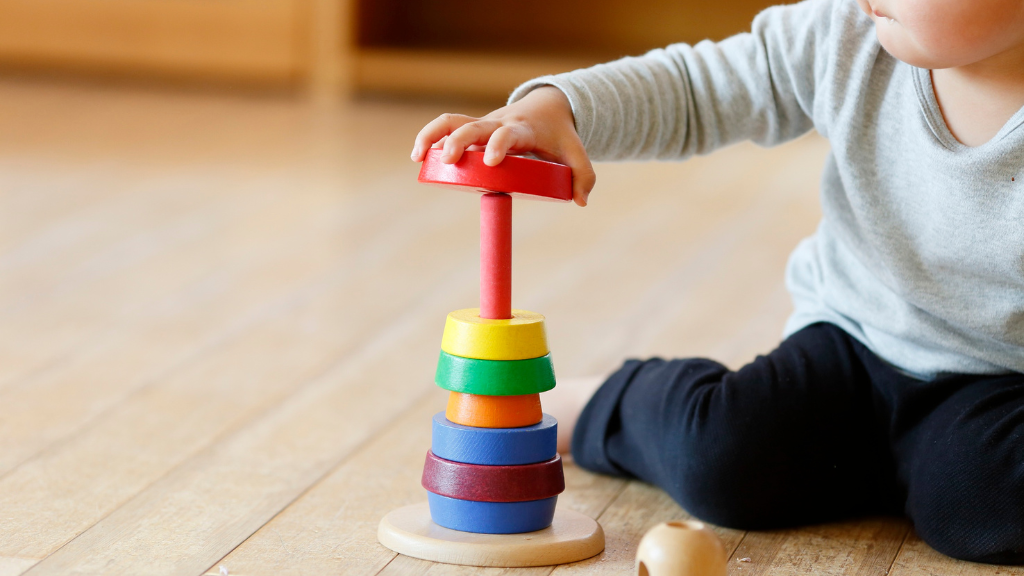10 Reasons Why Montessori-Inspired Toys Are Great for Kids’ Learning & Development

When it comes to toys, parents and educators are faced with countless choices. Bright plastic gadgets with flashing lights, character-branded sets, and trendy digital tools often dominate store shelves. But there is another category of toys that has been quietly shaping children’s learning for over a century: Montessori-inspired toys.
These toys are simple, beautiful, and purposeful. They are designed not just to entertain but to support a child’s natural development. The Montessori philosophy holds that children learn best when they are given freedom within structure, and the toys reflect this approach. They allow children to explore, discover, and practise skills in ways that feel natural and joyful.
Here are ten reasons why Montessori-inspired toys are truly great for children’s learning and development.
1. They Encourage Independence
Montessori-inspired toys are built to let children take charge of their play. A dressing frame that allows a child to practise buttons or zippers, or a child-sized broom that helps with sweeping, gives them the chance to master everyday tasks. This independence builds confidence and resilience, as children learn they are capable of doing things for themselves.
2. They Build Concentration
At a time when distractions are everywhere, these toys invite focus. They are deliberately simple—no flashing lights or artificial sounds—so children can give their full attention to the task. Whether it’s fitting puzzle pieces, threading beads, or pouring water from one container to another, Montessori toys create moments of deep concentration.
3. They Support Hands-On Learning
Children learn best by doing, and Montessori toys honour that. Instead of passively watching or pressing buttons, children engage their senses. A sandpaper letter introduces the texture of language. Wooden counting beads make numbers tangible. These tactile experiences help children absorb knowledge in a way that feels real.
4. They Grow with the Child
A great Montessori toy evolves with the child’s abilities. A simple set of wooden blocks may begin as towers for a toddler, but as the child grows, those same blocks become part of intricate bridges, homes, and imaginative worlds. This adaptability ensures that the toy continues to challenge and inspire over time.
5. They Have Purpose
Every Montessori-inspired toy has a clear educational goal. Shape sorters develop problem-solving and spatial reasoning. Pouring sets refine motor control. Counting rods support early numeracy. These toys are more than play—they are tools for developing real-world skills in a joyful way.
6. They Are Durable and Eco-Friendly
Made from natural materials like wood, cotton, or metal, Montessori toys are built to last. They stand up to years of use and can be passed down from one child to another. Choosing eco-friendly toys also teaches children about sustainability, instilling values of care and respect for the environment.
7. They Inspire Creativity Without Overstimulation
Montessori toys are intentionally simple. A plain wooden doll can become a doctor, a firefighter, or a friend, depending on the child’s imagination. By leaving space for creativity, these toys allow children to invent their own stories and worlds rather than following a scripted play pattern.
8. They Teach Practical Life Skills
One of the hallmarks of Montessori is practical life learning. Toys that mimic real-life tasks—like child-sized cooking sets, watering cans, or cleaning tools—help children practise useful skills. Not only do they find joy in contributing to their environment, but they also learn responsibility and pride in their abilities.
9. They Encourage Problem-Solving
Montessori-inspired toys are often self-correcting. A puzzle piece that does not fit or a tower that topples teaches a child to try again without adult intervention. This builds resilience, critical thinking, and the ability to approach challenges with patience and creativity.
10. They Align with Natural Development
Perhaps the greatest strength of Montessori toys is that they meet children where they are developmentally. They are not designed to push abstract concepts too early but instead give children concrete, hands-on experiences that match their stage of growth. This alignment makes learning joyful rather than stressful.
Frequently Asked Questions
Do Montessori-inspired toys only work in Montessori schools?
No. These toys can be used in any home or classroom. Parents often find they integrate seamlessly into daily play.
Are they more expensive than other toys?
Some Montessori-inspired toys cost more because they use natural, durable materials. However, their longevity and versatility often make them better value than cheaper, disposable alternatives.
Can older children still benefit from them?
Absolutely. Many Montessori-inspired toys, like puzzles, building sets, and math manipulatives, remain useful and engaging well beyond the toddler years.
Do Montessori-inspired toys avoid technology completely?
Montessori-inspired toys are designed to be hands-on and tactile, which is why they avoid screens and electronics. This helps children develop focus, creativity, and practical skills before introducing technology later.
Helping Parents and Educators Choose Wisely
Montessori-inspired toys are not just another trend. They are rooted in decades of educational practice and child development research. By giving children toys that encourage independence, focus, creativity, and real-world skills, parents and educators can nurture a love of learning that lasts a lifetime.
For people looking for thoughtful guidance, Little Makers offers a curated collection of Montessori-inspired and educational toys that empower adults to choose with confidence. Each toy is carefully selected to inspire creativity, spark discovery, and stand the test of time. Chosen by real parents who value quality and purpose, Little Makers helps children thrive and flourish—one toy at a time.